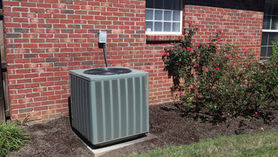

16 hours ago4 min read


16 hours ago4 min read


Jul 22, 20215 min read


May 14, 20212 min read


May 14, 20212 min read


May 14, 20212 min read


May 12, 20211 min read


May 11, 20213 min read


May 11, 20212 min read


May 11, 20213 min read
Updated: May 15, 2021
Sometimes replacing rotted wood isn’t an option. In conserving historic buildings, for example, the goal is to preserve as much of the original “architectural fabric” as possible.
Stabilizing deteriorated wood with epoxy is often the only choice. Epoxies consist of resin and hardener that are mixed just before use.
Liquids for injection and spatula-applied pastes are available. After curing, epoxy-stabilized wood can be shaped with regular woodworking tools and painted.
Epoxies are useful for consolidating rotted wood, restoring lost portions of molding’s and carvings, and for strengthening weakened structural members.
In the last case, they’re used to bond concealed metal reinforcement inside holes or channels cut into hidden faces.
Epoxies aren’t preservatives and won’t stop existing decay or prevent future infection.
They can be tricky to use; follow the manufacturer’s mixing, application, and safety instructions to the letter.
When looking for the causes of your wood rot, remember that CORRELATION DOES NOT IMPLY CAUSATION. Meaning that if the dry rot is right by a pipe, the moisture may not be coming from the pipe, but from the roof instead.
We say this, because we know best. Too many times we learned this lesson. Believe us when we tell you that although the pipe is dry, it did not heal itself, it may be a roofing leak that had time to dry and it’s waiting for the next rain…specially here in Los Angeles. Allow us to do a thorough inspection and when we find the problem, it is only then that we can actually fix it.































Comments